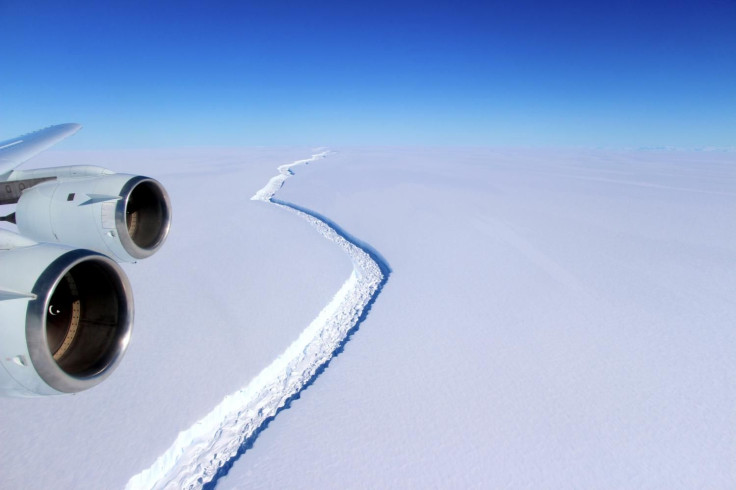Antarctica’s Larsen C Ice Shelf Has A New Rift Branch, As Existing Crack Keeps Widening

Less than 10 days after researchers reported the massive crack in Larsen C ice shelf in northwest Antarctica had to grown to over 175 kilometers (almost 110 miles) long, a new report out Tuesday said a new rift has branched out from the existing one. The new observations were reported by Project MIDAS, an Antarctic research organization based in the United Kingdom.
Using data from the European Space Agency’s Sentinel-1 satellites, researchers found the new rift to be 15 kilometers long already. It branches out about 10 kilometers behind the tip of the bigger crack, and is headed in the direction of the ice-front. The only piece of good news, if it can be called that, is that the tip of the bigger crack, which is not 180 kilometers long, hasn’t advanced since the last observation.
“This is the first significant change to the rift since February of this year. Although the rift length has been static for several months, it has been steadily widening, at rates in excess of a meter per day,” Professor Adrian Luckman of Swansea University and head of Project Midas, said in a statement Tuesday.
Read: Study Questions Rate Of Ice Loss In Antarctic Peninsula

The new rift was observed using synthetic aperture radar interferometry, a method that combines data from two radars to provide information a single radar would be unable to provide. This happens because direct visual observations are difficult and inaccurate, especially in the ongoing Antarctic winter.
The Larsen C ice shelf is about 350 meters thick and is on the edge of West Antarctica, acting as a dam to the flow of glaciers that flow into the seas in the region. Now, with the large crack in it, just about 20 kilometers of ice is keeping a chunk of 5,000 square kilometers from floating away.
“When it calves, the Larsen C Ice Shelf will lose more than 10 percent of its area to leave the ice front at its most retreated position ever recorded; this event will fundamentally change the landscape of the Antarctic Peninsula. We have previously shown that the new configuration will be less stable than it was prior to the rift, and that Larsen C may eventually follow the example of its neighbor Larsen B, which disintegrated in 2002 following a similar rift-induced calving event,” Luckman explained.
The Larsen A ice shelf had collapsed in 1995. The Larsen C ice shelf crack will lead to one of the largest icebergs ever recorded. As these massive chunks of ice melt after coming in contact with water, they contribute to the rise in sea levels. Also, the glaciers they kept in check start contributing more volume to the oceans, further raising their levels. Big icebergs can also pose a navigational risk to marine traffic.
Human-induced climate change has a large part to play in the heating of the polar regions, both of which have had record low ice cover in recent years, along with record high temperatures.
© Copyright IBTimes 2024. All rights reserved.




















